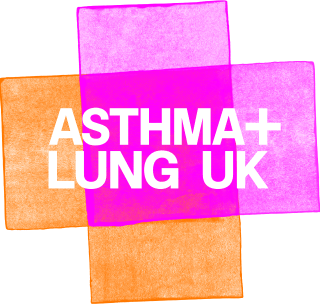Always have your reliever inhaler with you
If you have an asthma attack, your reliever inhaler could save your life.
Always carry your reliever inhaler with you, so you can treat asthma symptoms quickly.
What is a reliever inhaler?
Your reliever inhaler helps when you get asthma symptoms or have an asthma attack.
It contains a medicine called a bronchodilator which quickly opens your airways and helps you breathe more easily.
Reliever inhalers are also sometimes called rescue inhalers.
Make sure you have your reliever inhaler with you all the time, so it’s there if you need to use it.
Reliever inhalers are often blue. These have been the most common type of reliever inhaler for many years.
But combination inhalers used for maintenance and reliever therapy (MART) and anti-inflammatory reliever therapy (AIR) can be used as relievers too, and latest guidelines recommend these.
Some people may be prescribed a Brycanyl turbohaler. This is a reliever inhaler containing terbutaline. A Brycanyl turbohaler can relieve symptoms like chest tightness and breathlessness. But speak to your GP or nurse about whether this is the best inhaler for you to use if have an asthma attack. They may recommend you try a MART inhaler instead.
Good inhaler technique
Using your inhaler in the right way makes a big difference to how much reliever medicine gets into your airways where it’s needed. Your GP, nurse or pharmacist can check your inhaler technique. You can also check your technique now by watching our inhaler videos.
Always use a spacer if you have a pMDI (pressurised metered dose inhaler) reliever.
Blue relievers
Some people have a blue reliever inhaler. Blue reliever inhalers contain a short acting bronchodilator (SABA) medicine called salbutamol which can quickly open your airways.
Ventolin, Easi-Breathe, and Easyhaler are examples of salbutamol inhalers.
Blue relievers do not contain steroid medicine, so they cannot treat inflammation in your airways.
If you use a blue reliever inhaler, you must also have a steroid preventer inhaler to keep down inflammation in your airways. Steroid preventer inhalers lower your risk of having asthma symptoms or an asthma attack.
If you only have a blue reliever inhaler for your asthma, you’re more at risk of symptoms and asthma attacks. You need to use a steroid preventer inhaler every day to prevent inflammation, and lower your risk of symptoms.
"Latest guidelines recommend that people move away from using blue reliever inhalers if they can. This is because evidence shows that using an AIR or MART inhaler instead lowers your risk of asthma attacks and needing hospital treatment for your asthma. Speak to your GP or nurse to make sure you’re on the best treatment plan for you." Dr Andy Whittamore, Asthma + Lung UK's GP
MART and AIR relievers
Combination inhalers used for MART (Maintenance and Reliever Therapy) or AIR (Anti-inflammatory Reliever) treatment plans contain both a steroid preventer medicine and a long-acting bronchodilator (LABA) called formoterol. Formoterol can open your airways quickly if you have an asthma attack.
This means MART and AIR inhalers can be used as your reliever inhaler if you have symptoms or an asthma attack, because they work as your reliever and a preventer inhaler in one. You do not need a blue reliever inhaler as well.
Evidence shows that using an AIR or MART combination inhaler lowers your risk of asthma attacks and needing hospital treatment for your asthma.
Only combination inhalers that contain formoterol can be used as your reliever. Ask your GP, nurse, or pharmacist if you’re not sure what type of combination inhaler you’re using.
"If you've been used to using a blue reliever inhaler, you may feel worried about changing to an AIR or Mart inhaler. Your GP, nurse, or pharmacist can reassure you that AIR and MART inhalers are safe and effective medicines and can treat symptoms and attacks quickly." Dr Andy Whittamore, Asthma + Lung UK's GP.
When to use your reliever inhaler
Whether your reliever is a blue reliever, an AIR inhaler or a MART inhaler you should only need to use it occasionally when:
- you get asthma symptoms
- you’re having an asthma attack.
Your asthma action plan tells you when to use your reliever inhaler, and how to use it if you have an asthma attack. It’s a good idea to share your asthma action plan with friends and family so they know how to help you if you get symptoms or have an asthma attack.
"Some people use their reliever before exercise. Not everyone needs to do this. Speak to your GP or nurse if exercise triggers your symptoms as it could be a sign that your asthma is not as well controlled as it could be." Dr Andy Whittamore, Asthma + Lung UK’s GP.
See your GP or nurse as soon as possible if:
- you’re using your blue reliever inhaler for symptoms three times a week or more OR
- you’re regularly using extra doses of your MART inhaler most days OR
- you’re using your AIR inhaler most days.
Needing your reliever inhaler often, can be a sign your asthma is getting worse. Ask your GP or nurse to review your treatment plan.
Find out more about symptoms getting worse.
Reliever inhaler side effects
Reliever inhalers are an essential treatment for asthma symptoms and asthma attacks. They have very few side effects.
You’re more likely to notice any side effects if you use more doses than recommended for your reliever inhaler. Ask your GP or nurse to write down the recommended dose in your asthma action plan. You can also check the patient information leaflet that comes with your inhaler.
Some people notice that they feel a bit shaky, or their heart beats faster than normal. These side effects usually pass quickly and are not dangerous. But they can feel uncomfortable, especially alongside other symptoms you may be having.
See your GP, nurse or pharmacist if you’re worried, or if side effects do not go away.
Read more about common concerns about asthma medicines.
Using too much of your blue reliever inhaler
Using too much of your blue reliever inhaler over a long period of time can cause more serious side effects, including your airways becoming hyper responsive. This means your airways get inflamed more quickly and easily, putting you at greater risk of an asthma attack.
If you’re using your blue reliever inhaler three or more times a week, or need more than two prescriptions for a blue reliever inhaler a year, speak to your GP or asthma nurse.
Getting a new reliever inhaler
"If you have a pressurised metered dose inhaler (pMDI) do not shake your inhaler to see if it’s run out. The sound of the liquid inside is not always the medicine, it could be the propellant. If you think you need a new prescription, ask your GP, nurse or pharmacist as soon as possible." Dr Andy Whittamore, Asthma and Lung UK’s GP.
Asthma symptoms can happen suddenly, so it’s important to always have a reliever inhaler that’s in date and has medicine in it.
Some inhaler devices have a counter to show how many doses are left. When the numbers on the counter turn red, it’s time to contact your GP surgery or pharmacist for a new prescription.
If your inhaler does not have a dose counter, you can work out when your inhaler is likely to run out yourself by:
- finding out how many doses your inhaler has when it’s new. This should be printed on the box, or you can ask your pharmacist.
- writing down how many doses you’ve used every time you use your inhaler
If you cannot get a new prescription from the GP and you urgently need a replacement reliever inhaler, your pharmacist can help. They may be able to issue an emergency reliever. Always call your GP or 111 if you're having symptoms.
Find out more about getting an emergency supply of medicines.
Check the expiry date if you haven’t used your reliever for a while
Even if you haven’t used all the medicine in your reliever inhaler, you should replace it with a new one if it has passed the expiry date.
You can find the expiry date on the bottom of the box, or on the side of the inhaler cannister.
If you do not have your reliever inhaler
If you do not have your reliever inhaler, and you’re struggling to breathe, call 999 straight away.
Do not wait to see if you get better on your own. An asthma attack makes it hard to breathe which is a medical emergency.
You need to call 999 to get the reliever treatment you need quickly.

Get support
Our helpline is closed from 1pm on Wednesday 24th December 2025 and re-opens at 9:15am on Friday January 2nd 2026. Our supporter care line is also unavailable during this period. If you have a flare-up of your lung condition symptoms, contact your GP or healthcare professional or 111 for advice. Always dial 999 in an emergency.








